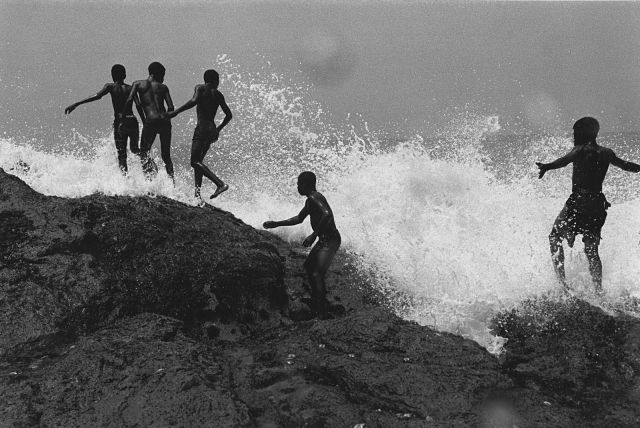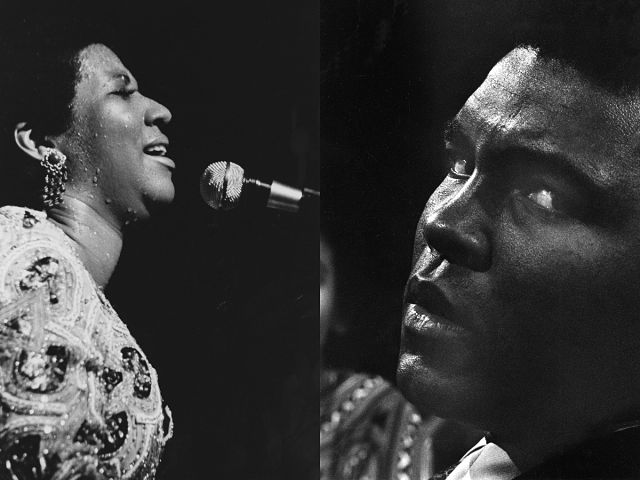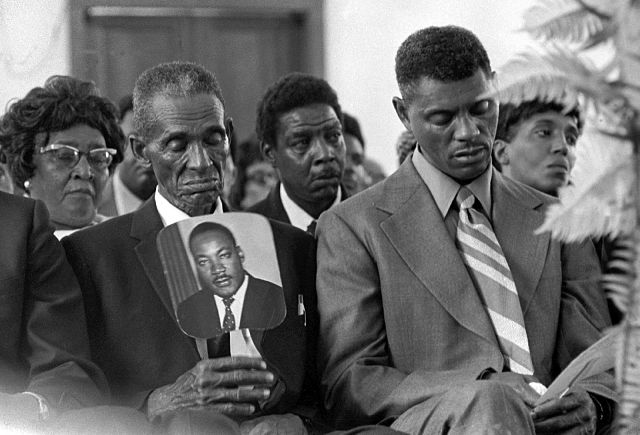By Jordan Coley
All along the way, his eye is trained on moments of calm, locating an inherent grace, style, and sublime beauty in the Black everyday.
Hanging in the fourth-floor study of the renowned photojournalist Chester Higgins’s Fort Greene brownstone is a bunch of large dead leaves, fastened to a line in front of a well-stocked bookcase. Higgins grew the leaves in his window boxes, he told me, and he’s been making photographs of them for some time now. It’s a way, he said, to examine how “the spirit” manifests in all natural things.

“Ocean Spray, Accra, Ghana,” 1973.
The spirit—a transportive, deeply human, ineffable quality that graces all memorable art work—is what the seventy-four-year-old photographer has spent his entire career trying to capture in pictures. He glimpses it in the cracking veins of old foliage, but also among the countless people he’s photographed across the decades: Muhammad Ali casting a mischievous sideward glance on the set of a television show; Aretha Franklin performing at the Apollo, her brow embroidered with sweat; a young Black boy, revelling in the spray of a fire hydrant.

“Aretha Franklin at the Apollo, Harlem, New York,” 1971. “Muhammad Ali, New York City,” 1972.

A group of Black men and women in church one man carrying a fan with the photo of Martin Luther King Jr. on it. “New Brockton Church Pew, Springfield Baptist Church,” 1973.
When Higgins began making photographs for magazines and newspapers, in the late nineteen-sixties, he was one of a handful of Black photographers working in mainstream media. Much of the work produced in his thirty-nine years as a staff photographer at the Times was a concerted attempt to incorporate Black America into the world’s consciousness. “When I arrived at The New York Times in 1975, I felt the media was immune to any real comprehension of the world I knew well,” he wrote at the time of his retirement from the paper, in 2014. “I wanted to share the history and traditions of the people I grew up with.”
Read the full article and see more photos at newyorker.com »
—